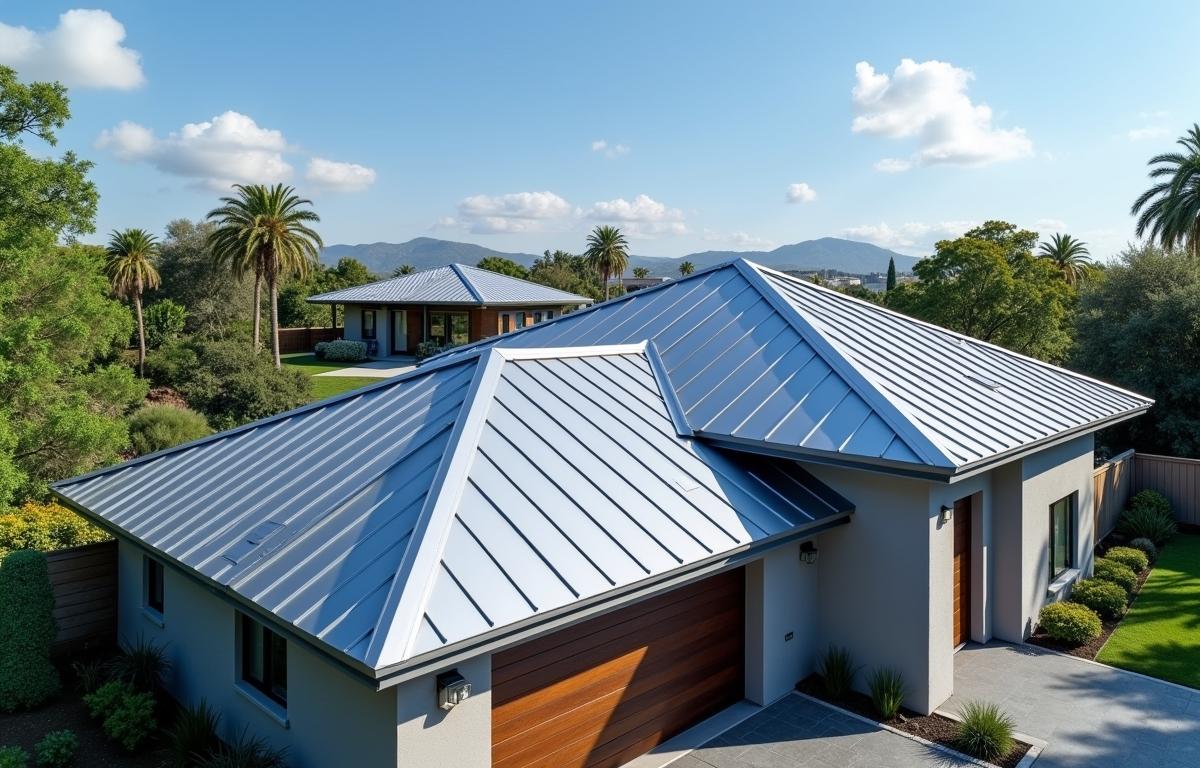When planning a home upgrade, especially one as significant as installing a metal roof, understanding the variables that affect pricing can help you avoid unexpected expenses. You may have already noticed that metal roofing prices vary widely, and that’s because several crucial factors influence what you’ll ultimately pay. If you’re budgeting for a new roof, here are seven key factors that directly impact the metal roofing cost.
Type of Metal Used
There are different types of metal roofs. The material you choose will have a major effect on the total cost. Steel and aluminium are among the most affordable and widely used options, while copper and zinc are considered premium materials. If you want durability on a budget, galvanized steel may be a good option, but if you’re aiming for a distinctive look and long-lasting performance, expect to pay more for copper or zinc.
Roof Style and Design Complexity
The more complex your roof’s design, the higher your costs will be. Simple gable roofs are easier and faster to install, requiring fewer materials and labor hours. However, if your roof has multiple angles, valleys, dormers, or skylights, expect to spend more. These architectural features require precise cutting, custom fittings, and more time on the job site. All these increase the total metal roofing cost.
Size of Your Roof
The larger your roof, the more materials and labor are needed. Roofing is usually priced per square foot, so a 3,000-square-foot roof will cost significantly more than a 1,500-square-foot one. Measuring your roof’s surface area accurately can help you get realistic cost estimates from contractors.
Location and Local Labor Rates
Your zip code can influence the cost of a metal roof more than you might think. Urban areas with a high cost of living tend to have higher labor costs.
Similarly, if you live in a remote or difficult-to-access area, transportation and material delivery fees may add to your bill. Local building codes and permit requirements can also impact budget, so it’s a good idea to check with your local municipality before you start the project.
Type of Metal Roofing System
There are different types of metal roofing systems. Your choice will affect both cost and installation. For instance, standing seam metal roofs are sleek and durable but require skilled labor and specialized equipment.
Corrugated metal panels, on the other hand, are less expensive and easier to install but may not offer the same level of weather resistance. Choosing between exposed-fastener and concealed-fastener systems also makes a big difference in price.
Underlayment and Insulation Needs
Beneath every metal roof is a layer of underlayment that adds weather protection and insulation. If your roof needs additional soundproofing or energy-efficient insulation, that will increase your project’s total cost.
Synthetic underlayments tend to cost more than traditional felt, but they offer better performance over time. Your roofing contractor can help you decide what’s best for your climate and home. Consult with a professional from Arco Insulation, or any similar companies, before you proceed.
Removal of Existing Roof
If your current roof needs to be removed before the metal roofing is installed, this will add to your labor and disposal costs.
While some homes can have a metal roof installed over an existing roof, that’s not always advisable, especially if the old structure has damage or leaks. Some old homes may also use dangerous materials like asbestos. Be sure to ask your contractor if a tear-off is necessary and factor that into your budget.
Endnote
When estimating your metal roofing cost, remember that every project is unique. Your choice on labor, materials, roof design, and insulation will all play a role in the amount you spend. However, by understanding the above factors, you can plan smarter, avoid surprise fees, and get the most value out of your investment.
